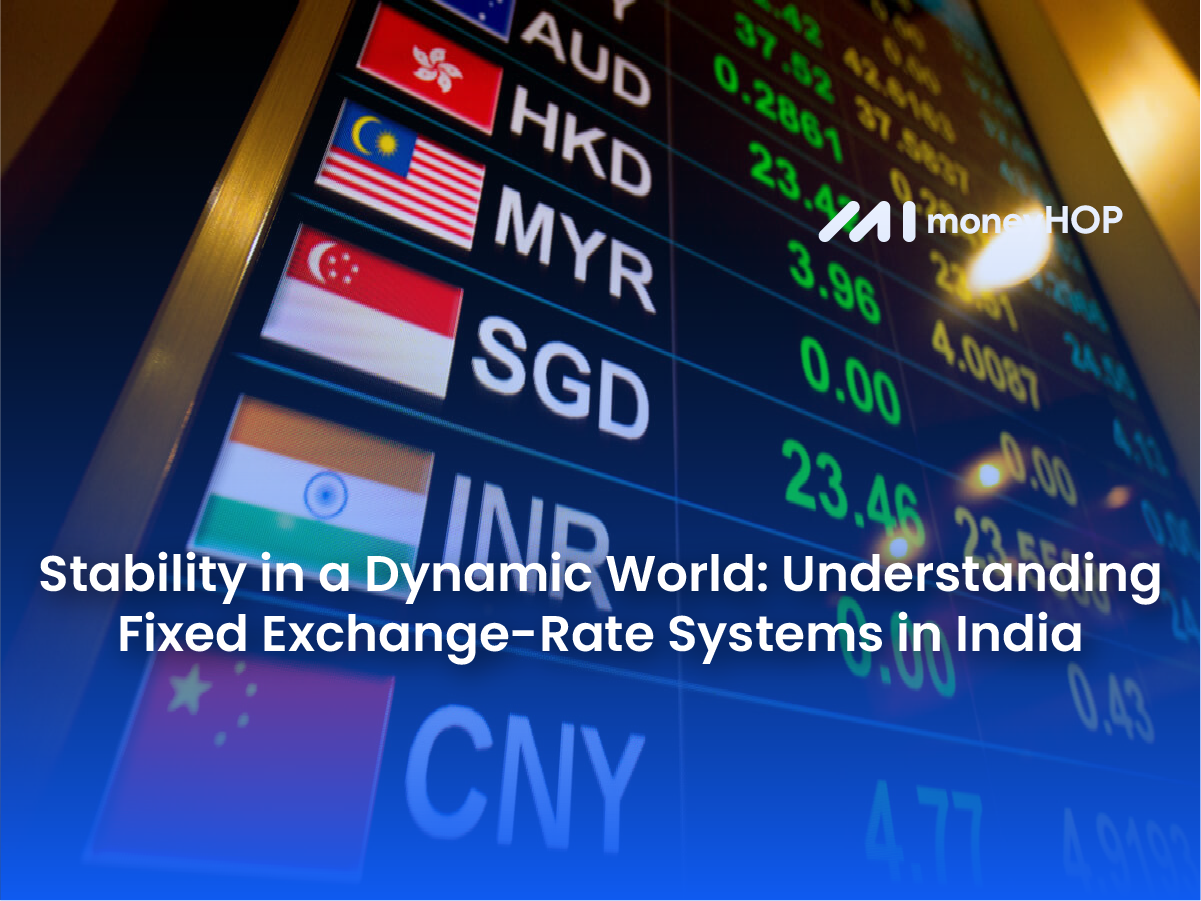The economic structures found in India are multifaceted, similar to the country’s cultural and geographical diversities. The management of the currency exchange rates in India is very essential in the global market for stability, trade liberalization, and economic growth. Among these, the fixed exchange rate system can be regarded as one of the most vital processes of such management. In this blog we’ll explore the forms of fixed exchange rate systems, their operational mechanisms and the impacts they have on the economy.
What is a Fixed Exchange-Rate System?
A fixed exchange rate system, or pegged exchange rate system, is a technique whereby the value of a country’s currency in foreign trade with another major currency or group of currencies is linked. This system aims to fix currency volatility by making the exchange rates less volatile.
Types of Fixed Exchange-Rate Systems
1. Hard Pegs
The hard peg represents the strictest variety of the fixed exchange rate system. The country commits to fixing the currency to another foreign currency or a basket of foreign currencies at an immovable rate. Though India does not adopt a complex peg system, some elements of currency management in the country sound like it.
A classic example would be in 1991, when India pegged the Indian Rupee to the US Dollar temporarily to stabilize the economy; this ensured a consistent exchange rate and went the extra mile in restoring investor confidence during those rough times.
2. Soft Pegs
A soft peg system is more flexible than a hard peg system because it allows the currency to fluctuate to some extent around a central exchange rate but within a predetermined band. This kind of system would enable minor economic shocks to be absorbed without causing dramatic changes in the exchange rate. The managed float system that India follows is akin to the soft peg system. The RBI intervenes in the foreign exchange market in a manner that does not allow the INR to be too much off from its desired value. This intervention helps in ensuring export competitiveness while containing inflation.
3. Currency Boards
A currency board arrangement is a hard peg under which the country’s monetary policy is directly pegged to the foreign currency it is pegged. The government has to maintain reserves of the pegged currency equivalent to its currency in circulation. India has not adopted a currency-board system. However, systems of such kinds can be studied to give an insight into how strict currency management could operate.
Read more: Unlocking the Power of Cross-Border Payments: The Must-Have Apps for Indians
Why does India favor a managed float?
India prefers a managed float over a strict fixed exchange rate system due to several reasons:
- Economic Flexibility: In a managed float, the RBI could alter the exchange rate subject to prevailing economic situations. This is an essential aspect because the flexibility provided will meet external shocks such as a global financial crisis or changes in the price of oil.
- Inflation Control: The RBI can influence inflation by managing the exchange rate. In other words, it can control inflation by making imports cheaper and dearer by strengthening and weakening the rupee, respectively.
- Competitiveness: By keeping the value of goods and services balanced internationally, a managed float keeps Indian goods and services competitive. A managed float allows adjustments to support this competitiveness without causing drastic currency fluctuations.
The INR in 2024
As of 2024, the RBI regulates whenever there is an indication of extreme volatility to level it. An overview of some critical issues within the recent macroeconomic data:
- Rupee’s Performance: The INR has been troubled due to weak global economies and falling oil prices, though timely corrective actions by the RBI have helped stabilize the currency.
- Inflation Rates: An area of concern would relate to inflation, which is a factor in global prices of commodities and domestic economic policies. But the managed float does help in balancing these pressures.
- Foreign Exchange Reserves: Huge reserves under foreign exchange that act as support for external shocks ensure that the RBI can manage the value of the rupee well.
Why pay more for international money transfers when moneyHOP is here?
- NO hidden fees
- ZERO convenience fees
- Real-time updates
- Lowest exchange rates
Way Forward
Understanding the types of fixed exchange-rate systems and their application in the Indian context will reveal this balance that is so required for maintaining economic stability. Even though India follows no strict fixed system, it most surely adopts a managed float approach to remain flexible enough to handle the dimensions of the global economy. Currency management will continue to be the nuance in the strategy being employed by India, especially as it grows and integrates further into the world market.
In this shifting world of economic tides, India’s way of managing its currency exchange rate shows the right mix of stability and adaptability. Hence, it is resilient and competitive with the rest of the world.

Leave a Reply